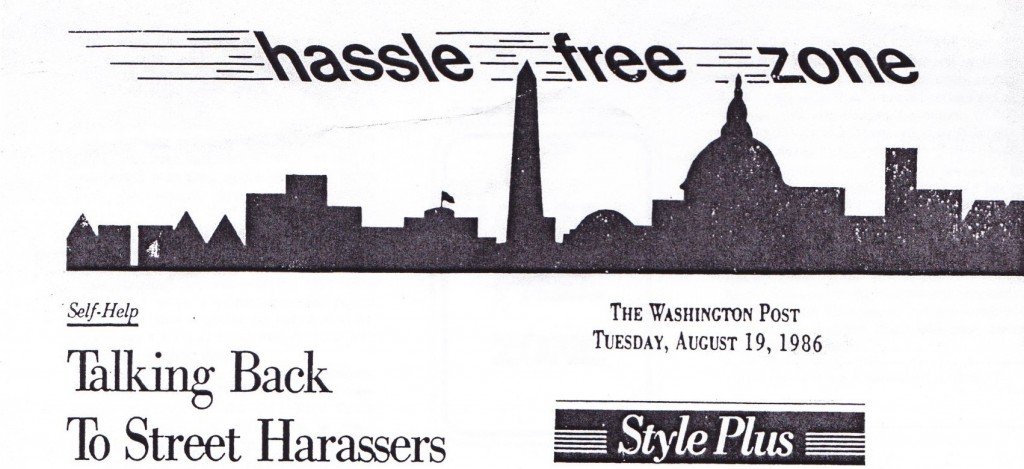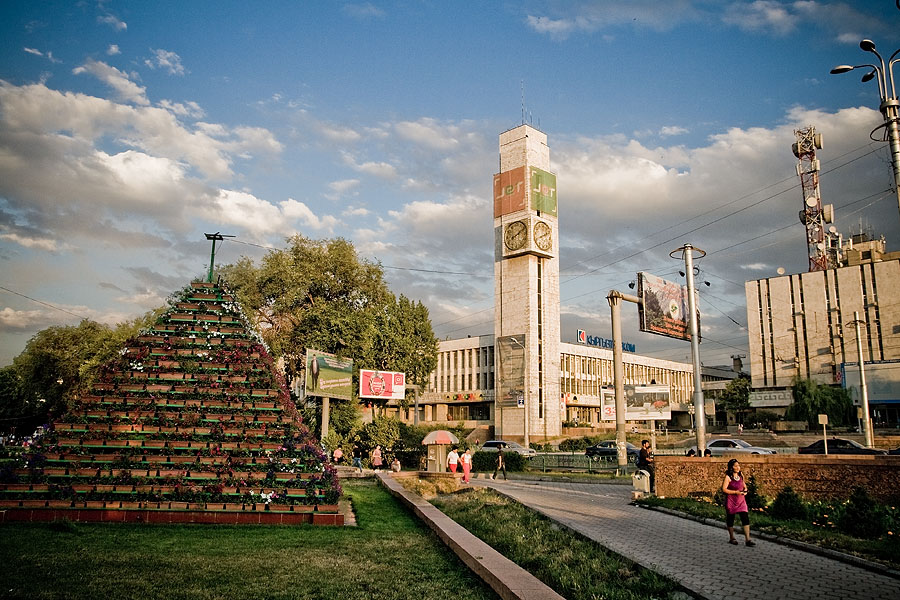By Lauren McEwen, Washington, D.C., USA, SSH Correspondent
 A while back, I read an interesting post by a male ally about street harassment in which he attempted to explain to other cis men why gendered harassment in public spaces is not OK. It basically amounted to him saying, “Hey, I know it’s hard to understand that some of the social norms we were spoon-fed as kids isn’t OK, but it’s the 21st century, and we now officially know that street harassment is unacceptable.”
A while back, I read an interesting post by a male ally about street harassment in which he attempted to explain to other cis men why gendered harassment in public spaces is not OK. It basically amounted to him saying, “Hey, I know it’s hard to understand that some of the social norms we were spoon-fed as kids isn’t OK, but it’s the 21st century, and we now officially know that street harassment is unacceptable.”
While I appreciate all positive support for something I believe in, here’s the thing: the anti-street harassment movement is not a new phenomenon. It can be argued that street harassment has been a problem since women began moving through public spaces on their own. There have been studies conducted, books written and protests waved to fight against street harassment for generations.
Today’s anti-street harassment movement has something that all of the other efforts did not – the power of the Internet. Each day, I come across about three to five stories about street harassment. I see tweets from people affected by it venting and comforting each other, in turn. The saturation of news and opinions and anecdotes about street harassment all over the web can make it seem like street harassment has been tolerable up until this new generation of overly sensitive, politically correct kids came of age, but it’s not.
This post is about times in the past 100 years when street harassment was both documented and fought.
Early 1900s: Mashing
Street harassment was called “mashing” in the early 1900s, and some women decided to take matters in their own hands, stabbing mashers with their hatpins, and punching or hitting harassers across the face with their handbags. They also reported harassment to the police and in some cases, were successful in getting the masher arrested.
While it’s not advisable to get into physical altercations with street harassers, these accounts prove that there was not a time when street harassment was universally viewed as a “compliment.” It was threatening enough in the 1930s for these women to attack their harassers, and one can only assume that the actual words and actions that present-day street harassers employ are can be even more vulgar than those used by their predecessors.
[Editor’s Note: Stanford professor Estelle Freedman’s new book Redefining Rape includes a chapter about mashers/street harassers from the 1880s to 1920s.]
1920s: The Anti-Flirt Club
In the 1920s, a group of D.C. women formed the Anti-Flirt Club and held the first and only Anti-Flirt Week. During World War I, it became common practice for men to offer female pedestrians rides when they saw them walking down the street as part of their civic duty. But soon, those offered rides became tainted by aggressive flirting on the part of the driver. Although the group’s secretary acknowledged that here were other “flirts” about, the drivers were the most worrisome.
The Atlantic reprinted excerpts from a 1920s Washington Post article that detailed the rules of the Anti-Flirt Club, and although some of the advice seems sound enough, (“Don’t accept rides from flirting motorists—they don’t all invite you in to save you a walk.” “Don’t let elderly men with an eye to a flirtation pat you on the shoulder and take a fatherly interest in you. Those are usually the kind who want to forget they are fathers.”) some of the rules were tinged with slut-shaming (“Don’t flirt; those who flirt in haste oft repent in leisure.” “Don’t use your eyes for ogling—they were made for worthier purposes.”)
The trouble with the Anti-Flirt Club was that, once again, the onus for preventing “flirting” (or rather, street harassment) was once again placed on women. Don’t make eye contact. Don’t smile. But be sure to keep your options open, because you never know where your future husband may be hiding.
The Manhattan-based version of the Anti-Flirt Club was run by men, and placed the burden of ending street harassment on women in another, slightly less oppressive, way. They wanted “to educate public opinion to the point where a woman will consider it her duty to prosecute the masher who attempts to force his attentions upon her. The association intends to have its own counsel, who will aid in prosecuting all masher cases.” (More on “mashers” in a bit.)
According to The Atlantic, it isn’t clear what charges could have been drawn against these early 20th century street harassers, but interestingly, two politicians tried (and failed) to get anti-street harassment bills passed in 1897, and in 1931, the Chicago Tribune quoted the Acting Police Commissioner John Alock saying, “This street flirting has got to stop in Chicago. No longer may young men in automobiles edge over to the curb and honk their horns at pretty girls on the sidewalk. They must quit ogling women from loafing places in front of drug stores, cigar stores and other public hangouts.”
Eventually, the efforts seemed to fizzle – fewer articles were written about the anti-flirt movement – but police and politicians from generations ago at least appeared to take sexual harassment seriously. Seems like we have regressed quite a bit over the years.
1940s: “Hands Off! Self Defense for Women”
In 1942, a book by Major W.E. Fairbairn was published that sought to teach women “basic methods of attack and defense” in order to help them defend themselves should they be attacked. It served as a sort of wartime manual to teach readers some of the self-defense tactics Fairbairn picked up while serving with the Shanghai Municipal Police.
In the foreword, Fairbairn explained what motivated him to write the book. As more American women began to work outside of the home, taking the places of men who were away at war, they would be in new and unfamiliar situations, and should be able to defend themselves in case their safety was threatened.
1980s: The Hassle-Free Zone Campaign
In 1985, several community organizations, including the D.C. Rape Crisis Center (the first rape crisis center in the U.S.), the D.C. Women’s Law Center and D.C. Men Against Sexual Violence teamed up to organize an effort to convert the District into a “hassle-free zone.”
Marty Langelan, the former president of the D.C. Rape Crisis Center and the author of Back Off: How to Confront and Stop Sexual Harassment and Harassers, detailed the 1985 campaign in her book and talked to me about it in an interview.
Posters and flyers were created by Linda Leaks and the African American Women’s Committee for Community Education, local law students researched ways to potentially prosecute harassers and self defense instructors from the D.C. Rape Crises Center taught women confrontation classes.
In September 1985, they focused on street harassment during the Take Back the Night March and the annual Anti-Rape Week program, and got then-Mayor Marion Barry to issue a proclamation asking that all Washingtonians strive to make the District a Hassle-Free Zone. A resolution supporting the campaign was passed by the City Council.
The following spring, the campaign hosted speakouts in street harassment hotspots, like parks and Metro Stations, after work and during lunchtime, when there would be more people on the street. There were skits, speeches and “open mike sessions to give women a chance to sound off about their harassment experiences.” They held their final public speakout during October 1986.
It’s hard to say if it is inspiring or disheartening to realize that groups have been fighting to end street harassment for generations. It does, however, serve as a reminder that we are not battling a non-issue, but something that has hindered the happiness and safety of people for longer than we would like to imagine.



